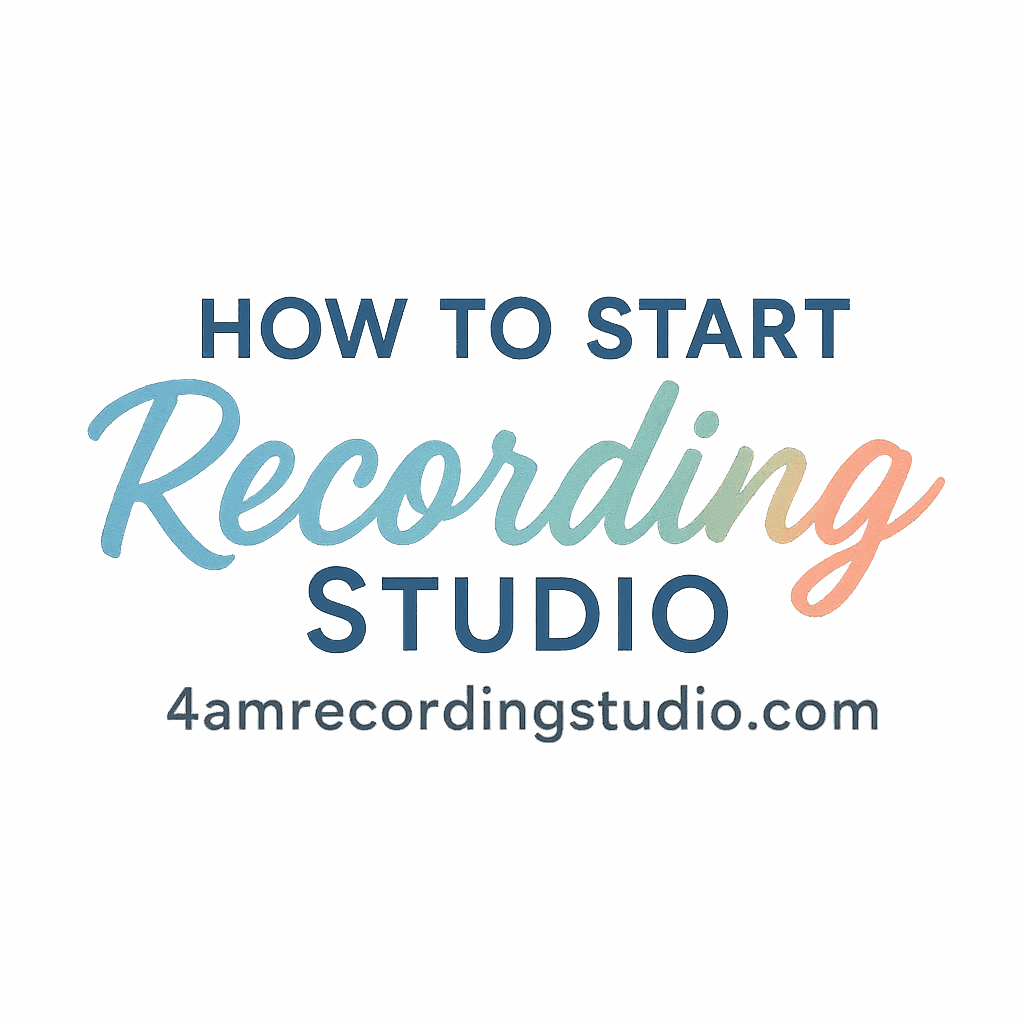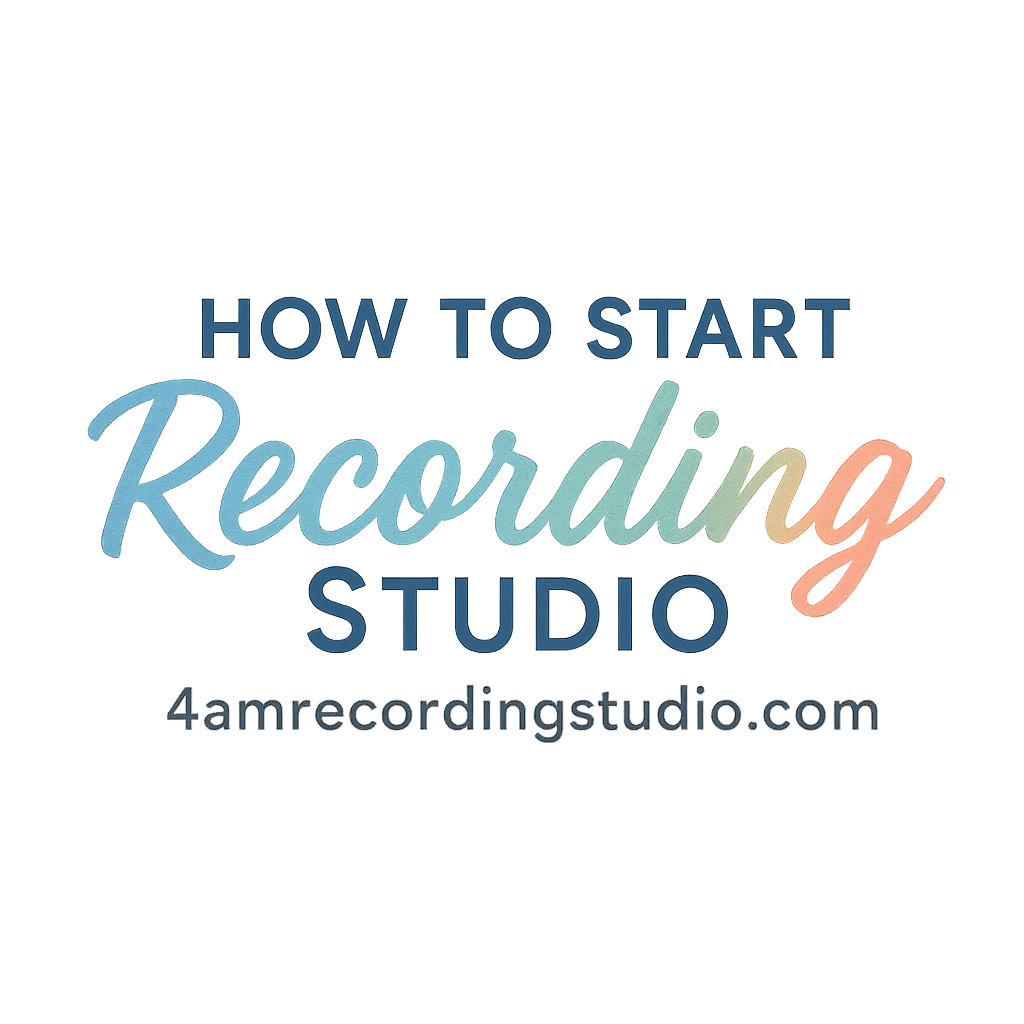Introduction: Why Recording Studio Software Matters
If you’re building your dream studio or upgrading your home setup, recording studio software is the heartbeat of your production space. Think of it as your creative playground where ideas turn into polished tracks. Without the right digital audio workstation (DAW), even the best microphones and gear won’t cut it.
This guide covers six killer DAWs you should know—each with its unique flavor, features, and fan base. Whether you’re a complete beginner or looking to scale your studio business, there’s a perfect match out there.
(Also check out: Recording Studio Setup Basics)
What to Look for in Recording Studio Software
Before you dive into any one DAW, it’s smart to understand what separates a good pick from a great one.
Compatibility with Your System
Some DAWs are Mac-only, while others shine on Windows. Make sure the software you choose plays nice with your current setup.
User Interface and Workflow
If it’s too clunky or complicated, you won’t use it. Simple layouts, customizable windows, and drag-and-drop options make a big difference.
Built-in Features and Plugins
Reverb, EQ, compressors, synths—having solid built-ins helps you create without blowing your budget on third-party plugins.
Price and Licensing
From free to premium, pricing varies wildly. Some DAWs offer lifetime updates; others require monthly subscriptions. Know what you’re paying for.
1. Pro Tools: The Industry Standard
Best for Professionals
Pro Tools is the big dog of recording studio software. Used in major studios, it’s trusted by audio engineers for mixing, mastering, and post-production.
Key Features
- Industry-standard for audio post-production
- Powerful editing tools and plugins
- Seamless hardware integration
- Dolby Atmos and surround sound support
Pros and Cons
Pros:
- Unmatched editing capabilities
- Trusted by top engineers
- Scales for big projects
Cons:
- Steep learning curve
- Subscription-based pricing
Want to go pro? Then Pro Tools is your guy. Just be ready to invest some time learning it.
2. Logic Pro X: Apple’s Audio Powerhouse
Best for Mac Users
If you’re an Apple user, Logic Pro X offers insane value. It’s packed with high-end tools perfect for music production and sound design.
Key Features
- Smart Tempo for flexible timing
- Massive library of instruments and loops
- Flex Time and Pitch for audio correction
- Live Loops for non-linear music creation
Pros and Cons
Pros:
- One-time affordable purchase
- Sleek and user-friendly
- Tons of creative tools
Cons:
- Mac-only
- Can be resource-intensive
Logic Pro X makes sense if you’re in the Apple ecosystem and want pro-level tools without recurring fees.
Explore more tools in our Recording Studio Equipment & Tools guide.
3. Ableton Live: For Creative and Live Performance
Best for Electronic Producers
Ableton Live is the playground for electronic, hip-hop, and experimental producers. Its intuitive interface encourages exploration and creativity.
Key Features
- Session View for live jamming
- Warp feature for time-stretching
- Built-in synthesizers and effects
- Seamless MIDI mapping
Pros and Cons
Pros:
- Ideal for live performance
- Inspires creativity
- Excellent MIDI workflow
Cons:
- GUI may feel alien to some
- Premium versions get pricey
If you love tweaking sounds or performing live sets, Ableton will feel like home.
4. FL Studio: A Beatmaker’s Paradise
Best for Beginners and Beatmakers
FL Studio, known as FruityLoops, is a go-to for beatmakers and producers who want to dive in fast and start laying down heat.

Key Features
- Step sequencer for quick drum programming
- Lifetime free updates
- Piano roll is second to none
- Large user community with tutorials
Pros and Cons
Pros:
- Easy learning curve
- Perfect for hip-hop/trap beats
- Great value
Cons:
- Weak in audio recording/editing
- Windows-first experience (Mac support improving)
Beginners love FL Studio, and it’s not just hype. It helps you make music now, not later.
5. Cubase: The All-Rounder
Best for Composers and Arrangers
Cubase has been around for decades—and it shows. It’s perfect for musicians who work with MIDI, scoring, and studio-grade recording.
Key Features
- Advanced MIDI editing
- Integrated score editor
- Chord pads for songwriting
- VST support
Pros and Cons
Pros:
- Versatile for any genre
- Powerful for composition
- Great audio engine
Cons:
- UI feels dated to some
- Steeper learning curve
Need to balance scoring with multi-track recording? Cubase hits the sweet spot.
6. Studio One: The Modern Contender
Best for Streamlined Workflows
Studio One by PreSonus is the new kid climbing the ranks. It combines intuitive design with pro-level capabilities.
Key Features
- Drag-and-drop workflow
- Integrated mastering suite
- Melodyne pitch correction
- Multi-touch support
Pros and Cons
Pros:
- Fast workflow
- Affordable options
- Mastering tools built-in
Cons:
- Smaller plugin ecosystem
- Lacks community size of others
Studio One is a rising star and perfect if you want a fresh, modern DAW experience.
How to Choose the Best Software for You
Match Your Needs and Budget
If you’re on a tight budget, go with FL Studio or Studio One’s free version. Got cash and big dreams? Pro Tools or Cubase might be the move.
Consider Your Genre and Workflow
Electronic music? Go Ableton. Film scores or classical compositions? Cubase is king. Recording vocals and guitars? Logic or Pro Tools are solid.
Bonus: Free Recording Software Options
Not ready to spend yet? Here are a few freebies worth checking out:
- Cakewalk by BandLab – Full-featured DAW, Windows only
- Tracktion T7 – No restrictions, great starter tool
- GarageBand – Perfect for Mac beginners
These won’t replace premium tools but are excellent starting points.
Tips to Maximize Your DAW’s Potential
- Invest in learning: Watch tutorials and read guides
- Use templates to speed up sessions
- Keep your plugins organized
- Backup your projects regularly
- Collaborate with other producers online (see Collaboration)
Also consider signing up for our Newsletter for more studio hacks!
Final Thoughts
Your recording studio software can make or break your sound. It’s not about the flashiest name—it’s about what helps you create confidently and consistently. So choose wisely, stay consistent, and don’t be afraid to try something new. You can always upgrade or switch later.
Want to scale your studio game? Check out:
- Recording Studio Business Planning
- Recording Studio Marketing & Branding
- Recording Studio Management & Growth
FAQs
1. What is the best DAW for beginners?
FL Studio and GarageBand are beginner-friendly and come with intuitive interfaces.
2. Can I use multiple DAWs?
Absolutely. Many producers use one DAW for composing and another for mixing.
3. Do I need expensive software to make good music?
Nope. Talent matters more than tools. Free DAWs can go a long way.
4. Is Logic Pro X better than Pro Tools?
They serve different users. Logic is great for music production, while Pro Tools excels in audio engineering and film.
5. What’s the most budget-friendly professional DAW?
Studio One and FL Studio offer strong pro features at a reasonable price.
6. Is Ableton only for electronic music?
While it’s ideal for electronic genres, Ableton is capable of handling any type of music.
7. How often should I update my DAW?
Stick to stable versions unless a new feature significantly improves your workflow.


